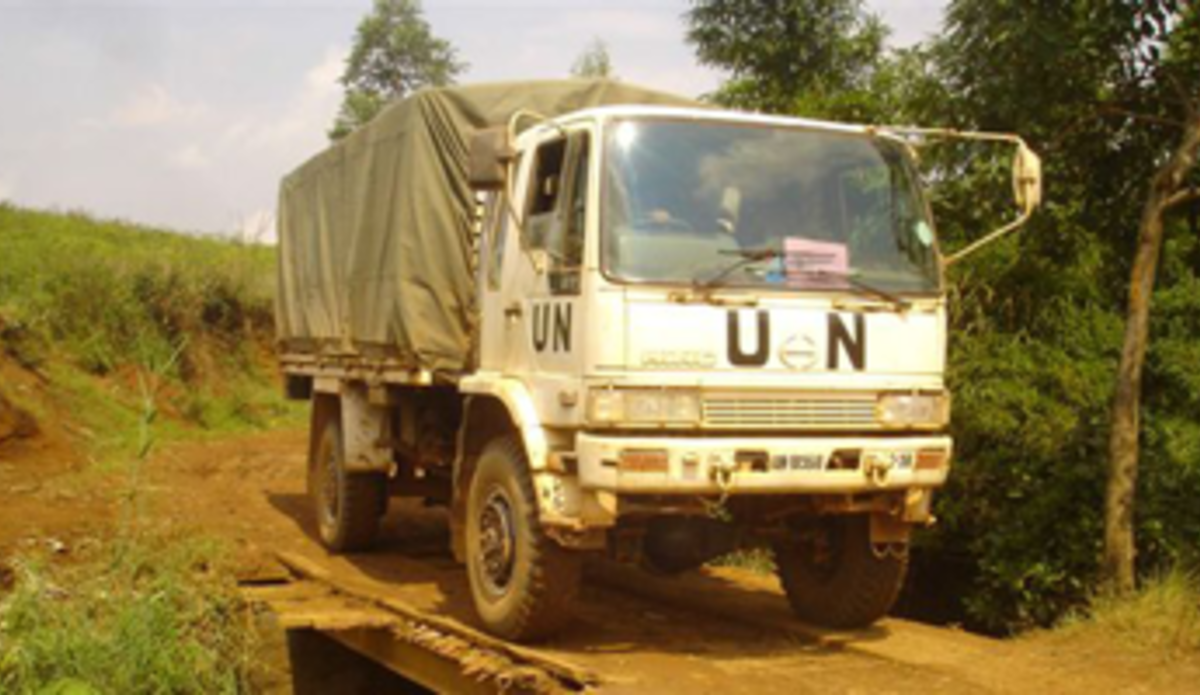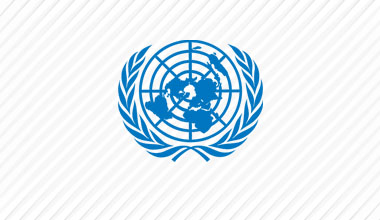Sud-Kivu Province: Opening Shabunda to the World a Daunting Task
Bukavu, 4 July 2011 – When 17 staff members of the United Nations Stabilization Mission in the Democratic Republic of Congo (MONUSCO), the United Nations Office for Project Services (UNOPS), the World Food Programme (WFP), and the Roads Department of the DRC embarked on a journey from Bukavu to Sabunda on 12 June little did they know what was ahead of them.
For security reasons they were escorted by 40 elements of the Sud-Kivu brigade. This was the first UN-led mission on that road and the 363 km journey lasted six days.
There were two reasons for the trip. On the one hand it was to assess both the on-going rehabilitation works on the road and the security situation in Walikale which is the largest territory in Sud Kivu province, and on the other it was to provide an insight to the need for restoring state authority, and establishing a MONUSCO military base in the region.
The rehabilitation of this 363 road is on the priority list of the International Security and Stabilization Support Strategy for Eastern DRC (ISSSS). The work itself is being jointly carried out by the country's Roads Department, UNOPS, the UK's Department for International Development (DFID), and MONUSCO. According to the local population they had hardly had any contact with the outside world since the early 1980s.
It is expected that the rehabilitation works will go through two phases. The first phase will see the clearing and widening the road while the second will involve more serious engineering works.
Road Condition
With its mostly muddy and rocky state, the road is largely impracticable for heavy duty trucks.
As we went through the first gallop but relatively stretch of 64 km between Bukavu-Lubimbi11, in a day, we thought it was going to be smooth sailing but that was not to be.
The story was not that rosy when we began a real bumpy ride on the second day to cover the Lubimbi II and Byongama stretch. It took us a whole day to complete the 22-km road between Lubimbi II and Ysezia, which is currently undergoing repair. The third day was no different as we spent the whole day to do the 34 km between Ysezia and Kigulube.
The 44 km access road between Kigulube and Nyankovu, was also challenging, especially at the beginning, but the road improved as we came nearer to Nyankovu. We managed to cover it, again in a day. From Nyankovu to Shabunda (119 km) through Byongama, the road could be described as good, since we made through only in a twelve hours.
The rehabilitation of this road is the responsibility of three separate entities: the Bangladeshi engineering company for the stretch Mubone-Lubimbi II; The National Roads Department for Roads between Lubimbi II and Isezia; and UNOPS for the Ysezia-Shabunda section. The construction work is done using heavy machinery, with the exception of the leg, which starts in Ysezia, where we saw substantial use of "intensive labor" technique by 23 sub-contractors who hired some 600 workers from nearby territories.
Restoration of State Authority
Throughout the journey we held a series of meetings with the area administrative officers, the police and military authorities as well as the civil society organizations. There were meetings in Nzibira, Kigulube, Byangama, Katchungu and Shabunda town itself. These meetings helped us understand the impact of the security vacuum created with the retrieval of the National Armed Forces (FARDC) for training within the framework of its ongoing restructuring and training of new regiments for later redeployment. Their retrieval led to an influx of, armed elements identified by the local population as members of the Democratic Forces for the Liberation of Rwanda (FDLR), and Mai Mai. They were reported to have terrorized the local people through sporadic attacks along the road and in the surrounding villages. In their quest for survival, they looted, took members of the community hostage, used men as forced labor and women as sexual slaves.
According to local sources, the districts of Lulingu and Nzovu were particularly affected, while those of Byangama and Katchungu suffered from exactions committed by FDLR elements that imposed taxes on the local population, and burnt their houses like they did in 2010.
Although the security situation was relatively calm along the road between Bukavu and Shabunda, reports reaching the assessment team said that the villages of Lubimbi-II and Nzovu, in the vicinity of Kahuzi-Biega national park were looted by armed men shortly after the UN convoy passed.
Administrative offices that we visited during the trip were generally in an advanced state of dilapidation, if not simply non-existent. For example, Nyankovu and its environs do not have a single health facility. Schools are in precarious conditions. A recent attack by FDLR elements in Mizombo, district of Wakabango I, territory of Shabunda, left one dead, while seven people were taken hostage, including two women and several items looted. The civil society representatives in the territory of Shabunda said the population is sick and tired of these attacks and took it upon themselves to set up vigilante groups to track down the assailants.
Administrative officials in Kigulube indicated that the top priority for them is the opening of the road to facilitate trade, traffic and NGOs activities in favor of community development projects. The deployment of state authority is second on their priority list.
Deployment of a MONUSCO Base along the Road
At our meeting with the the administrator in Shabunda he urged MONUSCO to establish a presence along the road between Bukavu and Shabunda, with frequent patrols from Katchungu to Lulingu. The NGOs we met at Shabunda and Kigulube also estimated that a UN presence on the road would help increase traffic adding that the ideal place for a MONUSCO base would be Kigulube, 192 km west of Bukavu.
In most territories that we visited, there was hardly any presence of the Congolese National Police or the FARD. In addition to security considerations, the need for basic social services (such as health and schools facilities) before a local administration can deploy in the area are of absolute importance. What perhaps gave some source of hope was that in all the territories we visited, the population moved freely and this was largely as a result of operation Kimia II which was launched launched by the FARDC in May 2009.
Populations' Expectations
Given that this route had not seen vehicular traffic for decades, we were greeted by a population that had never seen a vehicle. They came out dancing and singing and expressed the hope their lives would be transformed for the better through improved economic activities and with then provision of health and other public services.
Biliaminou Alao/ MONUSCO
 UN
UN United Nations Peacekeeping
United Nations Peacekeeping











